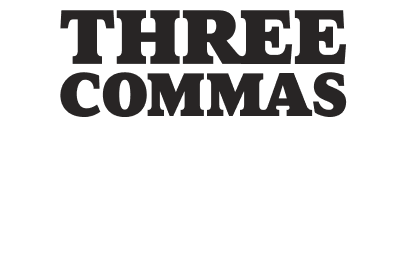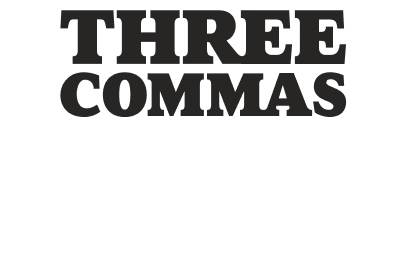“It was unbelievable,” marvels TV producer Peter Engel, when visiting the Saved By The Bell diner in Chicago. “It was almost like I stepped back in time. I was sitting in the famous Bell booth. That’s where I used to sit with the kids after rehearsal and give them notes.”

The notes must have been brilliant, because the teen-oriented sitcom Peter created and produced, Saved By the Bell, is the stuff of TV legend. Even Peter’s credit (Executive Producer - Peter Engel) has become iconic (to his credit!).
The original series, about an assorted group of impossibly good-looking high-school friends, ran from 1989-1993, and spawned a spinoff, TV movies, endless trivia questions and irrational fascination.
When the gang reunited on The Tonight Show With Jimmy Fallon in 2015, the segment generated 35 million hits on YouTube and broke the Internet.
“I never thought anyone would see our show,” he admits about its humble debut, over a quarter century ago. “We did premiere in prime time in the summer of 1989. The critics brutalized us in New York, San Francisco and LA. But the tapings were like a Beatles’ concert. It was wonderful. The cast was magical. They never, ever missed, ever.”
Peter credits much of that success to the charm and talent of the cast; in particular, Mark-Paul Gosselaar, who played the scheming, charming, practically sociopathic Zack Morris. “People thought [Mark-Paul] was Zack in real life, and he wasn’t,” Peter says. “He was a very serious-minded young man, and was very serious about his acting. He wasn’t Zack, and a lot of the crew would treat him like he was Zack. That’s why he was such a great actor, and he still is.”
Although most older series have gotten lost in the digital-age shuffle, Bell continues to entertain new generations of kids on new screens and devices.
“We’re selling more [Saved By The Bell ]T-shirts now than we did 25 years ago,” he says. “Every month, I’m approving new artwork.”
Peter has written a memoir, I Was Saved By The Bell, about the experiences the show has brought him – both as an entrepreneur and – eventually -- a player. He’s also a well-respected producer of many other television series, including NBC’s Last Comic Standing.
Of Last Comic, Peter says, “Jay Mohr came to me with the idea. The original title was Comic House [to be filmed like Big Brother]. I was under contract to NBC and we sold it. That summer, while we were shooting the pilot, American Idol came on. So the network said, ‘do a national comedian search: the search for the funniest person in America.’ That was so much fun – because comics --, forget the money, the prizes – the thing they want most is exposure. Four hours of exposure, even if you don’t win. And five if you get to the final five or six.”
In fact, Bell and Last Comic have something in common, thanks to Peter’s savvy knowledge of what translates well in television.
“If you can make them laugh, you can make them cry,” he says. “Those are the best shows, with the best actors. They have you laughing, and before you know it, you’re crying. It’s emotion. The best shows are the ones that make you laugh and cry.”
Saved By the Bell was played mostly for laughs, but all true fans remember the more tender moments, like when Jesse (Elizabeth Berkley) became hooked on caffeine pills, or the endlessly frustrating breakups and regroupings of Zack and Kelly (Mark-Paul Gosselaar and Tiffani-Amber Theissen).
Zack and Kelly’s unified heart was repeatedly broken (not including reruns), but that’s nothing compared to the rejection and disappointment that Peter endured in real life.
“You can’t ever give up,” he says. “I’ve had my heart broken so many times, both professionally and personally. But that’s how you come off the floor. That’s what makes successful people different.”
Peter feels this goes for our country as well, just as we’re coming out of an especially difficult year.
“We [as a country] always mess up, since George Washington,” he says. “We as a people always get back up. It’s how you get back up, not how you get knocked down.“
The failed projects made Peter appreciate his huge successes.
“There were so many shows that broke my heart,” he says. “If you don’t have those, you don’t fully appreciate when you have an enduring hit that impacted a whole generation. And more generations now.”
Although Peter wrote a successful memoir and is responsible for one of the most adored shows in TV history, he doesn’t live in the past.

“I don’t read yesterday’s newspaper,” he says, “but I think television today is doing stunning things. The problem is, there is so much clutter that [good TV] is hard to find. But with Netflix, you can have your opportunities when you want them. Television is doing tremendous things, and there’s so much of it.”
Like all entrepreneurs, Peter’s dream of working in and creating television stayed secret at first. Often, when an idea is first announced, it is automatically met with skepticism.
“That’s why I went to textile school,” he says. “I was embarrassed. I didn’t think my family, or anyone I knew, would take me seriously. And then I went to NYU Film School, and worked at NBC as a page. And ironically enough, that’s where I ended up.”
Peter has advice for those who want to break into television, which is suddenly hotter than movies and hungry for content.
“Movies are a directors’ medium,” he says. “Television is a writer’s and executive director’s medium. I tell people, the best way in is to write. No one cares who you are. If it’s on the page, it can be on the stage.”

For entrepreneurs in general, Peter says, “You have to dream big, because big dreams are harder to accomplish than little ones. And you can’t let anyone steal your dreams. You can’t let anyone frighten you. And you have to never, ever give up. I had so many shows that coulda-shoulda-woulda, but didn’t. I say if you can make a living at anything that you love doing, you’ll have a great life.”


